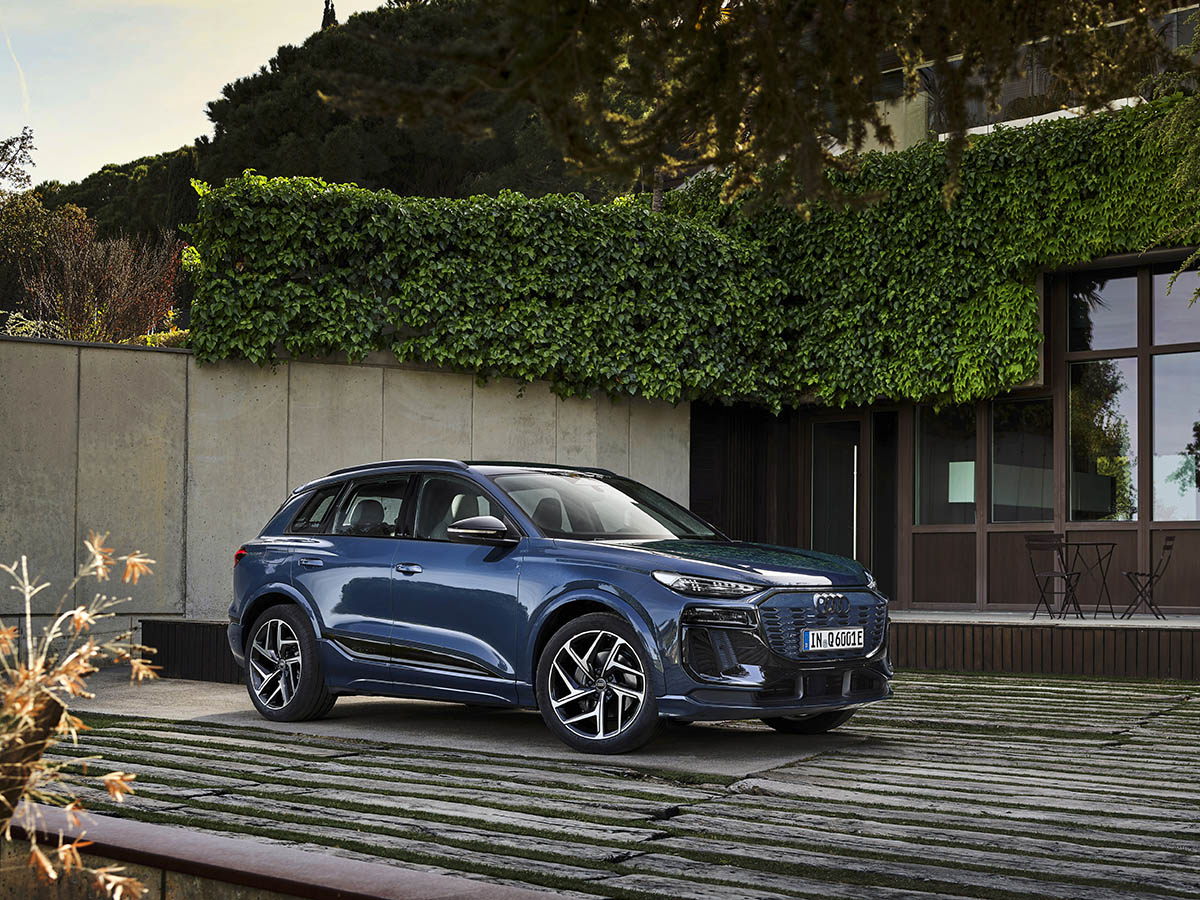Audi have just released details of their new Q6 e-tron, the first vehicle to be produced on their Premium Platform Electric, co-developed with Porsche. It’s a chassis which will underpin a number of other cars. It will help Audi deliver on their promise to offer EVs in all core segments by 2027.
The Q6, in two and four wheel drive configurations, will be available to order from Q2 this year with first deliveries expected in the summer.
A total capacity of 100kWh, with 95kWh of usable lithium-ion power allows for a claimed range of 625km. The standard car comes with a power output of 285kW with the sportier SQ6 coming with 380kW in total.

At launch, two four wheel drive options will be offered with the sprint to 100km/h taking just 4.3 seconds in the SQ6. Top speeds of 210km/h and 230km/h also feature, both figures impressive for an electric car.
Later on, rear wheel drive variants will go on sale, one majoring on efficiency and range while the other will be marketed as the entry level model.
Charging
800 volt architecture offers a maximum charging capacity of 270kW across the range, with up to 255km of range added in 10 minutes. The 10 to 80% benchmark is achievable in a claimed 21 minutes.
This level of charging is made possible by predictive thermal management of the battery and the Q6 is also fitted with Plug and Charge. This allows self-authorising at compatible charging stations, doing away with the need for apps and RFID cards. AC home charging of up to 11kW is also supported.
To further help the range, brake recuperation of up to 220kW is possible, with Audi reckoning that the system can handle up to 95% of all normal brake events.

The Q6 is a strict five seater, although there’s plenty of space for passengers and their luggage. A length of almost 4.8m allows a wheelbase of 2.9m so there’s plenty of space to lounge. A total of 526 litres of luggage space is on offer with all the seats in place, with over 1,500 litres available with the seats down. Another 64 litres of space is found in the frunk.
Technology
The new car also ushers in a new technology with the world’s first active digital lighting signature. Six OLED panels in the rear lights offer a total of 360 segments which can generate a new image 100 times a second.
This technology is also fitted to the front lights and they can communicate with surrounding vehicles to warn of accidents or other incidents.

The interior is dominated by the central MMI panoramic display and a separate passenger display. Soft touch materials, some of which are recycled, abound, with control areas depicted in gloss black.
Five high-powered computers control all functions on the vehicle, everything from infotainment to automated driving systems and it’s fully ready for communication with other cars on the road.

The computers also drive the displays with the front passenger display coming with an Active Privacy Mode, which keeps its content from the driver, allowing the passenger to watch a video undisturbed.
An optional augmented reality head-up display also features, with the virtual image appearing to be 200m down the road, meaning the driver’s eyes don’t have to constantly refocus.
Audi Assistant, a self-learning voice assistant, can also be used to control vehicle systems. There’s even an avatar for the system, which is displayed in the main screen and on the head up display. It understands more than 800 voice commands and can be activated in various ways, including from the app.
For the first time, Audi are using Android Automotive OS for the infotainment system, which also supports over the air updates. Audi connect services give access to the most up to date information and route planning and there’s even an app store, which doesn’t need a paired smartphone.
A 20 speaker Bang & Olufsen sound system with 830 watts of power is also available, with four of those speakers integrated into the headrests, allowing sound zones to be created.
There’s also a dynamic interaction light, which communicates and interacts with the occupants.
Driving and Systems
The suspension has been tuned for extra agility and this includes the steering rack being fixed to a subframe to provide the most direct response.

The all wheel drive system is rear-biased, with the rear motor providing the most power and the rear axle being fitted with wider tyres.
There are a plethora of driving assistance systems fitted, taking inputs from radar, a front camera and ultrasonic sensors. High resolution map data and even swarm data gleaned from outside the car are all used to control the self-driving tech.
Parking aid plus, adaptive cruise control, lane departure warning, efficiency assist, active front assist and a drowsiness warning system are all fitted as standard, with various other systems available as optional packages.










